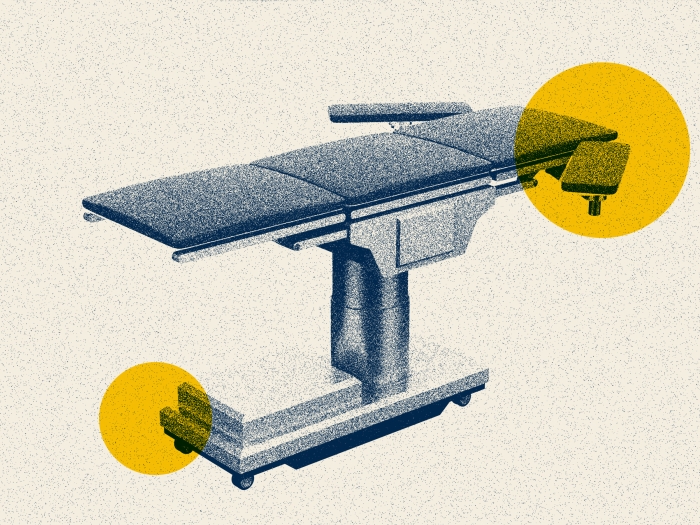A patient and physician stress the importance of strong partnership to guide treatment
2:00 PM
Author |

Despite working in the auto industry for more than 40 years, Ken Whipple has always been an avid cyclist. Since college, the Detroit native has biked over 240,000 miles.
“I used to keep logs of every ride,” Whipple, 88, said. “I’m not as much of an expert or as aggressive as I once was, though.”
During a ride in the early 1990s, Whipple felt what he thought was a muscle spasm. But he would later find it was caused by peripheral arterial disease, or PAD, a vascular disease in which arteries carrying blood from the heart to the legs are blocked by a buildup of plaque.
PAD affects more than 8.5 million Americans. While some have no symptoms, others, like Whipple, develop claudication. This pain caused by a lack of blood flow can increase a person’s risk for amputation.
Unsuccessful surgeries
For several years, Whipple didn’t do anything about his pain, until he had a revascularization surgery to clear the blockage.
“The doctor awakened me in the middle of the procedure to tell me they couldn’t clear the blockage,” Whipple said. “I wasn’t ready for a bypass, which would put me out for too long. But after the procedure, I developed an infection and went into septic shock.”
Whipple was transferred to University of Michigan Health, where he was officially diagnosed with PAD by vascular surgeon Jim Stanley, M.D. At this point, Whipple’s other leg began hurting, and vascular surgeon Matthew Corriere, M.D., attempted another revascularization, this time in Ann Arbor.
When that did not relieve his pain, Corriere tried to reroute blood around Whipple’s blocked artery using a piece of his own vein, a procedure known as lower extremity bypass.
“The bypass did result in significant improvement in the right leg,” Whipple said. “The recovery process, though, was worse than I thought; I had to learn how to walk again. None of these procedures were 100% successful, and when we began talking about another surgery, I realized I was OK with how I was. I could go to work, ride my bike, and do most things, though pretty well short of running marathons. I did not want to risk another recovery if I could stabilize.”
Research on what PAD patients need
Guidelines for treating the condition suggest a staged approach, depending on the severity of PAD.
The first step is to lower a patient’s risk factors and to use non-surgical therapies, such as statins or anti-platelet medications. Clinicians will ask patients to exercise, eat foods that are low in fat and cholesterol, and to work towards reducing stress.
If the pain persists and interferes with a patient’s life, Corriere says, a vascular surgeon will consider revascularization or a bypass. However, it’s common for plaque to return to necessitate another surgery.
Whipple’s taxing PAD journey provided Corriere with a learning experience — and a direction for his latest research. For the study, Corriere’s team surveyed 144 patients with PAD and claudication, giving standard questions but also leaving free text responses to learn more about their goals.
The results, published in the Journal of Vascular Surgery, reveal a large gap between how clinicians usually assess progress for PAD and what patients truly want.
“The problem is that we’re used to tracking a bunch of clinical outcomes, like changes in leg pressure, and other tests we do in the office,” he said. “But a lot of patients aren’t coming in wishing they could walk one minute or 100 feet longer. They want to know if they can do a specific activity or keep up with their spouse. Those are the real outcomes they care about.”
The research team found that some patients had goals that were much more ambitious than providers could expect them to reach. For example, more than half of patients wanted to walk more than a half mile — when previously 100 meters would be considered a meaningful improvement.
SEE ALSO: Easing Peripheral Artery Disease Pain, One Step at a Time
“We need to get on the same page with patients about what is a reasonable expectation and when to talk about doing a procedure,” Corriere said. “We can improve communication and patient experience when we partner with them on the front end. It can better inform the choices we make.”
While some of his mobility has decreased with age, Whipple feels less limited by his PAD and is still able to cycle. He also partnered with Corriere as a patient advisor on the study.
“A lot of medical groups don’t spend much time listening to patients about what is important to them,” Whipple said. “Patients and doctors need to get to a stage where they can have candid conversations about goals and the risks of consequences from procedures. That is the first step to improved care for PAD.”
Additional authors include Chloé A. Powell, M.D., M.S., Gloria Y. Kim, M.D., M.P.H., Sydney N. Edwards, B.S., Mary E. Byrnes, Ph.D., M.U.P., Nicholas H. Osborne, M.D., M.S., al of University of Michigan, Oliver Aalami, M.D. Stanford University, and Diane Treat-Jacobson, Ph.D., University of Minnesota.
Paper cited: “Characterizing patient-reported claudication treatment goals to support patient-centered treatment selection and measurement strategies,” Journal of Vascular Surgery. DOI: 0.1016/j.jvs.2022.09.2022

Explore a variety of health care news & stories by visiting the Health Lab home page for more articles.






